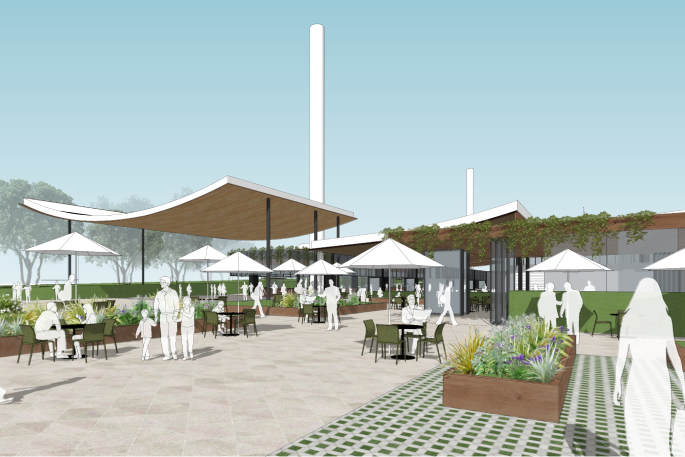Plans for a stadium in central Tauranga have been scaled back and construction pushed out because of budget constraints.
The community stadium at the Tauranga Domain will now be built in two stages and construction won’t begin until 2033.
Budget constraints were caused by the need for Tauranga City Council to provide water infrastructure beyond 2026 because the Government repealed the Three Waters legislation.
Stage 1 of the stadium included 5500 new seats, new community spaces and a cafe, a new hybrid turf sports field and an improved entrance.
One of the buildings would also be repurposed for the University of Waikato sports science faculty.
The initial proposal was for a $220m stadium with 7000 permanent seats and 8000 temporary seats.
It also would have included an exhibition centre, a community multi-use facility with changing rooms and lounge space, and a sports science/physiotherapy space.
Staged approach
Construction of this stadium would have begun in 2026, but last year the Commission opted to take a staged approach to the stadium with the build starting in 2029.
This was pushed out further to 2033 at the Long Term Plan 2024-2034 deliberations last week.
Commission chair Anne Tolley says the sensible thing to do is push out the timeline for the stadium and do it in stages.
The council consulted on the community stadium through the Long Term Plan and the majority of respondents didn’t want it. Of 1189 responses, 56 per cent wanted the stadium removed from the Long Term Plan.
There were 43 per cent of responses that supported a stadium – either staged or delivered in one go.
The stadium was also met with opposition from affected sports clubs and the public during the LTP hearings in February.
The Tauranga Bowls Club, Tauranga Croquet Club and Athletics Tauranga would need to be relocated from the domain at a cost of $21m.
Garth Mathieson of the Tauranga Millennium Track Trust says the proposed stadium wouldn’t have enough parking and couldn’t be expanded to keep up with the growth of Tauranga.
Nearby Rotorua had a 20,000-seat stadium and a much smaller population, says Garth.
“Let’s call the community stadium what it is, a second regional rugby stadium.”
The trust fundraised and built the all-weather athletics track at the domain.
 An artist’s impression of the stadium plaza for weekday use. Image: Tauranga City Council.
An artist’s impression of the stadium plaza for weekday use. Image: Tauranga City Council.
Loss of green space
The Tauranga Lawn Tennis Club would no longer have courts relocated with the stadium’s staged approach but it opposed the loss of green space.
Tauranga Lawn Tennis Club’s club captain Michel Galloway says the greenspace at the domain should be left as a legacy for future generations.
The stadium would result in a loss of the community sports that operated from the domain, says Michel.
The track trust, tennis and croquet clubs formed the Hands Off Tauranga Domain alliance and held a protest in March last year.
Around 500 people turned up to support the cause.
At the deliberations, Shannon Joe head of design at Jasmax, one of the design consultants for the stadium business case, said the stadium is people centric.
“This is a stadium for everyone and dubbed as the community stadium.”
Open its doors
The new design had a plaza entrance and “strong relationship” with Cameron Road.
Joe says the area wouldn’t be used for just sporting events or concerts and could be the “perfect venue” for Sunday brunches or markets.
“One of the key objectives was to make sure that this proposed development would open its doors.
"It would not seem privatised, but feel very public, very inviting and welcoming.”
Anne says she loves the openness of the design.
“It’s interesting that people talk about saving green space.
"It [Tauranga Domain] is at the moment a very closed-off place, that is covered with buildings and used by members of small clubs.
"What you've done is you’ve actually made a public space.”
Stage 2 would increase seating to 7000 and be expandable with 8000 temporary seats.
It would also include the exhibition and function space, community multi sports facilities and enhanced player facilities.
The expected cost of delivering Stage 2 is $157m but this has not been budgeted for because it isn’t included in the 2024-2034 LTP.
LDR is local body journalism co-funded by RNZ and NZ On Air.


